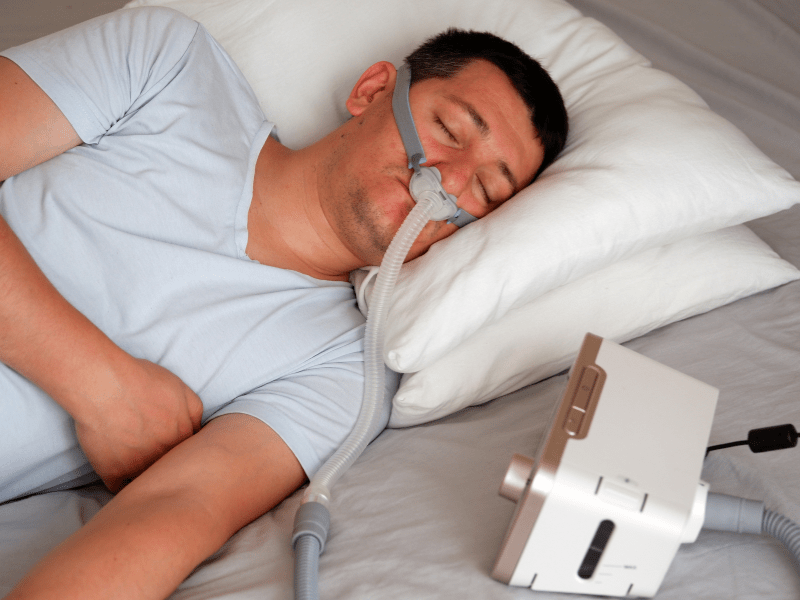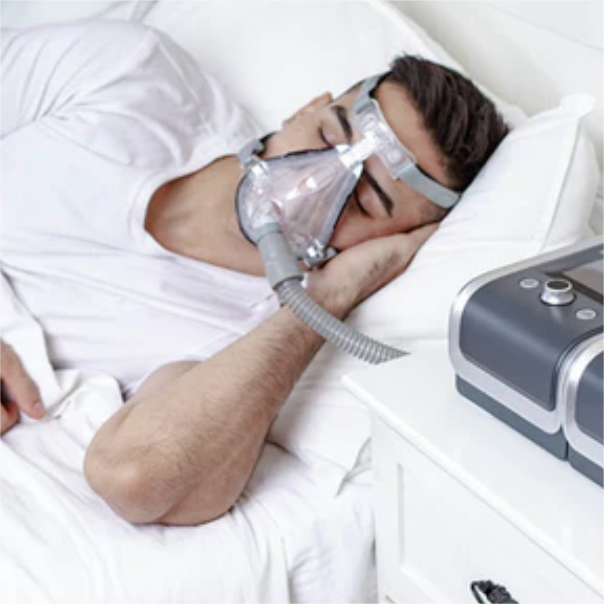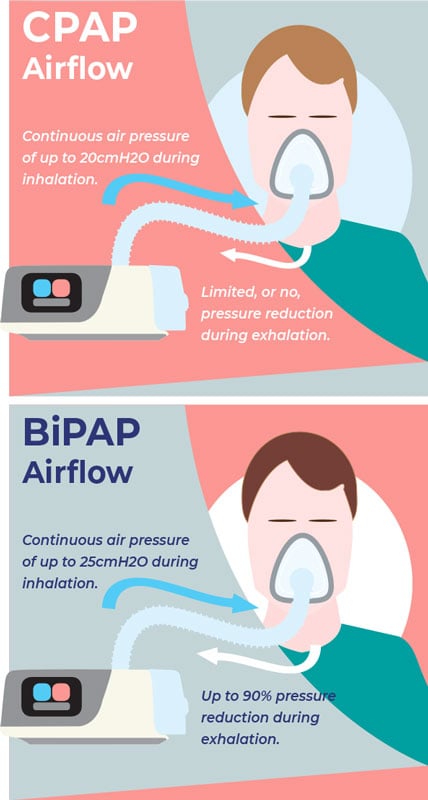Bipap vs. CPAP: Which Is the Best for Your Rest Problem?
When navigating the complexities of sleep disorders, the choice in between BiPAP and CPAP therapy is an essential factor to consider. Each method uses special advantages tailored to details problems, yet the decision rests on individual person demands and comfort levels. While CPAP offers a steady air movement ideal for obstructive sleep apnea, BiPAP's dual stress setups may enhance comfort for those with even more elaborate respiratory issues. Recognizing these differences can substantially affect treatment efficiency, leaving one to consider which option truly lines up with their wellness demands and lifestyle.
Understanding Sleep Disorders
Sleep problems include a variety of problems that interrupt regular rest patterns, influencing both the quality and period of remainder. These conditions can materialize in numerous forms, consisting of insomnia, rest apnea, narcolepsy, agitated leg disorder, and parasomnias. Each problem presents special challenges, frequently resulting in substantial daytime fatigue, cognitive problems, and psychological disruptions.
Insomnia is defined by trouble falling or remaining asleep, while rest apnea involves repeated disturbances in breathing throughout rest, typically causing fragmented remainder. Narcolepsy, on the various other hand, is marked by too much daytime drowsiness and sudden sleep attacks. Restless leg syndrome triggers uneasy experiences in the legs, triggering an uncontrollable desire to move them, which can likewise impede the capacity to sleep.
The effect of sleep conditions prolongs past private health and wellness, affecting general efficiency, partnerships, and lifestyle. Understanding the particular nature of each disorder is essential for effective medical diagnosis and treatment. As sleep health ends up being progressively acknowledged as a vital element of general well-being, addressing these conditions is vital for boosting both sleep high quality and daily functioning.
How CPAP Functions
Continuous Favorable Respiratory Tract Stress (CPAP) therapy is often employed as a key therapy for obstructive sleep apnea (OSA) The device of CPAP entails the usage of a device that delivers a steady stream of air with a mask worn throughout sleep. This airflow preserves favorable pressure in the airway, protecting against the collapse or blockage of the throat that can occur during rest.
When an individual breathes in, the CPAP machine provides a continual circulation of air, guaranteeing that the respiratory tract stays open - BiPAP Rental. This not only eases the signs of OSA, such as snoring and disrupted rest patterns, but also minimizes the connected health and wellness risks, including cardio issues and daytime fatigue
The pressure settings on a CPAP equipment can be tailored to fulfill specific client requirements, often identified via a sleep study. Generally, CPAP treatment has actually been shown to dramatically improve the quality of sleep and overall health and wellness for people suffering from obstructive sleep apnea.
How BiPAP Works
BiPAP, or Bilevel Favorable Airway Pressure, is a specialized form of non-invasive ventilation that is especially advantageous for clients with conditions such as complicated sleep apnea or respiratory conditions. Unlike CPAP, which provides a constant stream of air at a single pressure, BiPAP offers two unique pressure settings: a greater inspiratory pressure for inhalation and a reduced expiratory pressure for exhalation. This dual-pressure method permits for simpler breathing, minimizing the effort needed throughout exhalation.
The device operates through a mask fitted over the nose or mouth, attached to an equipment navigate to these guys that generates air pressure. When the person breathes in, the maker provides the higher pressure to aid with air movement, making certain that the air passage remains open. Upon exhalation, the equipment immediately decreases the pressure, making it more comfortable for the client to breathe out.

Key Differences Between BiPAP and CPAP

On the other hand, BiPAP (Bilevel Positive Air passage Pressure) supplies two different stress setups: one for inhalation and a lower one for exhalation. This dual pressure system permits even more comfy breathing, particularly for individuals that have problem with exhaling against a continual pressure. BiPAP is typically advised for patients with intricate sleep apnea, chronic obstructive lung condition (COPD), or those that need additional support during sleep.
Additionally, the complexity of BiPAP gadgets normally causes a greater price and calls for a lot more mindful titration than CPAP. BiPAP Rental. Understanding these essential differences can aid in identifying which tool might be better for specific rest problems, establishing the foundation for enlightened treatment decisions
Picking the Right Treatment
Just how can one determine the most suitable treatment for taking care of rest problems? The decision in between BiPAP and CPAP treatment mostly depends upon the specific attributes of the sleep disorder, the patient's total wellness, and their convenience with the tool. CPAP, which supplies a constant stream of air, is typically prescribed for obstructive rest apnea (OSA) It keeps an open air passage during sleep, properly preventing apneas and hypopneas.
Conversely, BiPAP gives two degrees of stress: one for inhalation and a reduced one for exhalation. This double stress system is valuable for people with intricate sleep apnea or those that experience difficulty breathing out against a continual pressure. In addition, BiPAP is commonly recommended for people with breathing conditions, such as persistent obstructive lung illness (COPD), where differing pressure setups can improve convenience and compliance.
Eventually, an extensive examination by see this site a rest specialist, including a rest research study, can assist determine which therapy straightens best with the person's needs. Aspects such as convenience, ease of usage, and particular clinical problems should likewise be taken into account to maximize therapy outcomes.
Final Thought
In recap, both BiPAP and CPAP offer distinctive objectives in the management of rest disorders. CPAP works for obstructive sleep apnea through consistent air flow, while BiPAP provides twin stress setups that boost convenience for those with complex sleep apnea or breathing problems. The option between these treatments should be guided by individual demands and problems, demanding an extensive analysis by a rest expert to guarantee optimal therapy outcomes and boosted top quality of rest.

On the whole, CPAP therapy has been revealed to considerably enhance the top quality of rest and overall wellness for individuals enduring from obstructive sleep apnea.
BiPAP is commonly advised for people with complicated rest apnea, chronic obstructive lung condition (COPD), or those that call for extra support throughout rest.
CPAP is reliable for obstructive rest apnea via regular air movement, while BiPAP offers dual pressure settings that enhance comfort for those with complicated rest apnea or respiratory system concerns.